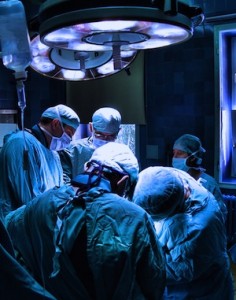 The cardiovascular unit has a hemodynamic room where cardiac catheterization, angioplasties, and other surgical procedures are carried out. These services are provided by highly qualified personnel and medical doctors certified by their specialty’s board.
The cardiovascular unit has a hemodynamic room where cardiac catheterization, angioplasties, and other surgical procedures are carried out. These services are provided by highly qualified personnel and medical doctors certified by their specialty’s board.
How the Cardiac Catheterization Test is performed
You will be given a mild sedative before the test to help you relax. An intravenous (IV) line is inserted into one of the blood vessels in your arm, neck, or groin after the site has been cleansed and numbed with a local numbing medicine (anesthetic). A catheter is then inserted through the IV and into your blood vessel. The catheter is carefully threaded into the heart using anx-ray machine that produces real-time pictures (fluoroscopy). Once the catheter is in place, your doctor may:
– Collect blood samples from the heart.
– Measure pressure and blood flow in the heart’s chambers and in the large arteries around the heart.
– Measure the oxygen in different parts of your heart.
– Examine the arteries of the heart with an x-ray technique called fluoroscopy (which gives immediate, “real-time” pictures of the x-ray images on a screen and provides a permanent record of the procedure).
– Perform a biopsy on the heart muscle.
How to Prepare for the Test
If possible, you will be asked not to eat or drink for 6 – 8 hours before the test. The test takes place in a hospital and you will be asked to wear a hospital gown. Sometimes, you will need to spend the night before the test in the hospital. Otherwise, you will be admitted as an outpatient or an inpatient the morning of the procedure.
Tell your doctor if you:
Are allergic to seafood.
Have had a bad reaction to contrast material or iodine in the past.
Are taking Viagra.
Might be pregnant.
How the Test Will Feel:
You will be awake and able to follow instructions during the test. You will usually get a mild sedative 30 minutes before the test to help you relax. The test may last 30 – 60 minutes. You may feel some discomfort at the site where the catheter is placed. Local anesthesia will be used to numb the site, so the only sensation should be one of pressure at the site.
You may experience some discomfort from having to remain still for a long time. After the test, the catheter is removed. You might feel a firm pressure, used to prevent bleeding at the insertion site.
If the catheter is placed in your groin, you will usually be asked to lie flat on your back for a few hours after the test to avoid bleeding. This may cause some mild back discomfort.
Why the Test is performed
In general, this procedure is done to get information about the heart or its blood vessels or to provide treatment in certain types of heart conditions. It may also be used to determine the need for heart surgery.
Your doctor may perform cardiac catheterization to:
Diagnose or evaluate coronary artery disease.
Diagnose or evaluate congenital heart defects.
Diagnose or evaluate problems with the heart valves.
Diagnose causes of heart failure or cardiomyopathy.
The following may also be performed using cardiac catheterization:
Repair of certain types of heart defects.
Repair of a stuck (stenotic) heart valve.
Opening of blocked arteries or grafts in the heart.



